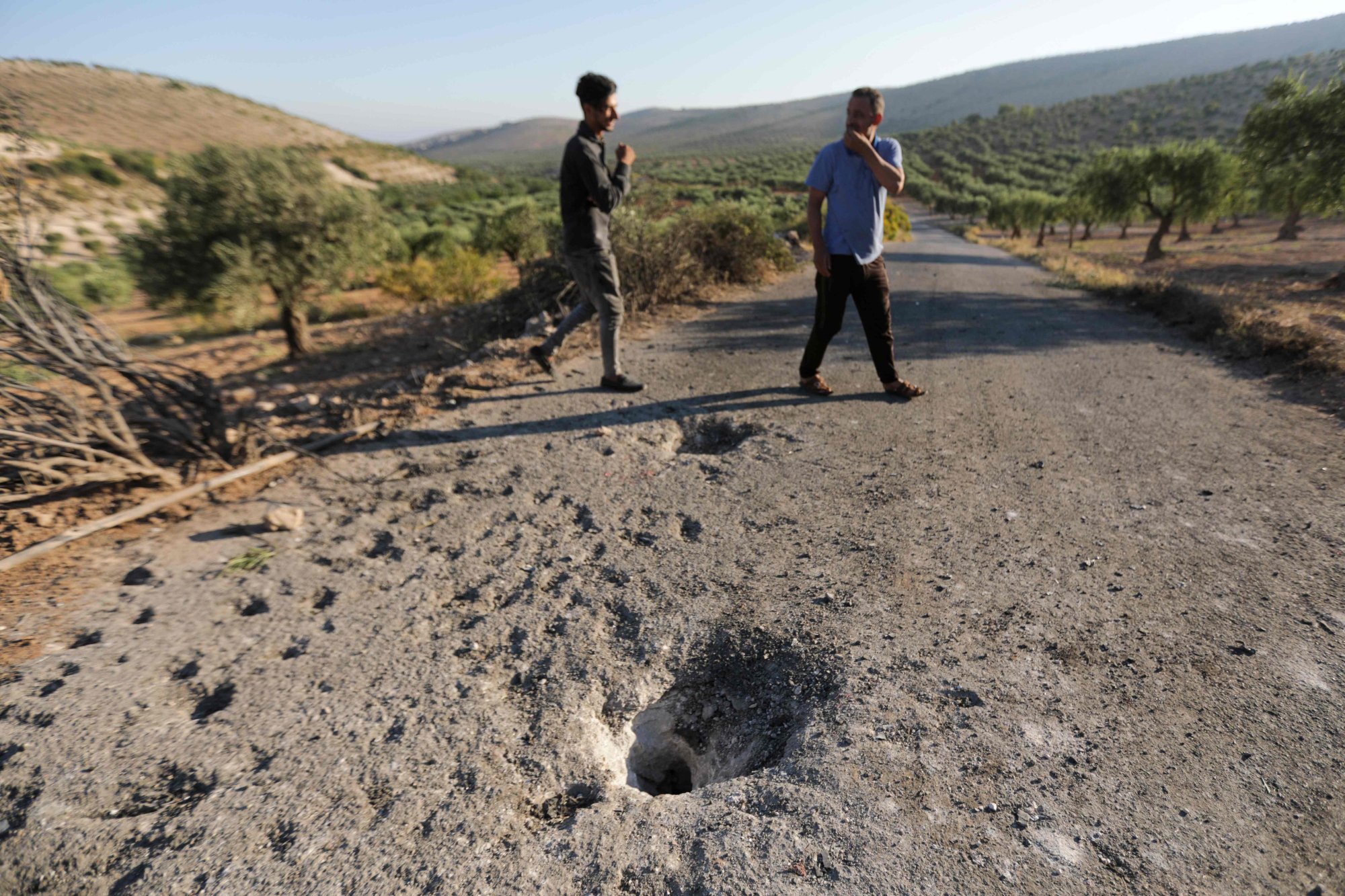
Islamic State Syria chief killed in US drone strike, Pentagon says
- Militant leader Maher al-Agal was riding a motorcycle at the time of the attack, which also left one of his top aides seriously injured
- The US called al-Agal ‘one of the top five’ Isis leaders, responsible for aggressively pursuing the development of Isis networks outside Iraq and Syria
A man who US officials called the leader of the Islamic State militant group in Syria was killed on Tuesday in a drone strike, the Pentagon said.
Maher al-Agal was killed while riding a motorcycle near Jindires in northern Syria, and one of his top aides was seriously injured, Pentagon Central Command spokesman Lieutenant Colonel Dave Eastburn said.
The Syrian Observatory for Human Rights confirmed Agal was killed in a drone strike.
The volunteer Syrian Civil Defence Force, known as the “White Helmets”, said one person was killed and another injured in a strike that targeted a motorcycle outside Aleppo, but did not identify the victims.
There was little information available about Agal, whom the Observatory called the Islamic State governor for the Levant. The US Central Command called him “one of the top five” leaders of Islamic State overall.
“In addition to being a senior leader within the group, al-Agal was responsible for aggressively pursuing the development of Isis networks outside of Iraq and Syria,” it said in a statement.
Iraq is building wall along Syria border ‘to keep out IS fighters’
According to a spokesman for the US-allied Kurdish Syrian Democratic Forces, both the men who were targeted had links to Ahrar al-Sharqiya, an armed group operating in northern Syria.
The group has integrated former leaders and members of Islamic State and other jihadist groups, and has conducted attacks against Kurdish targets inside Turkish-controlled areas of northern Syria.
Ahrar al-Sharqiya was responsible for the 2019 assassination of prominent Kurdish female politician Hevrin Khalaf, which sparked international condemnation. The US Treasury placed the group on its sanctions blacklist in July 2021.
“Ahrar al-Sharqiya has committed numerous crimes against civilians, particularly Syrian Kurds, including unlawful killings, abductions, torture, and seizures of private property,” the Treasury said at the time.
At the site of the drone strike, there were two small craters in the road and debris from the destroyed motorcycle.
Local villagers said the two Isis members did not live in the area where they were killed.

Damien Ferre, founder of the consultancy Jihad Analytics, downplayed the strike, saying Islamic State in Syria is “barely a shadow” of what it used to be.
“They are still able to carry out attacks against Syrian government forces and undertake operations here and there against the Kurdish forces,” he said.
But the group is weak compared to the period of the Islamic State “caliphate” that came to control large parts of Iraq and Syria between 2011 and 2019, he said.
“It is important to remember that each time an Islamic State head is killed, they are replaced immediately,” Ferre added. “It really should not impact their activities.”
Isis leader killed in US commando raid in Syria was a murky figure
The last two targeted killings of Islamic State leaders took place in Turkish-controlled areas of northern Syria, where groups like Ahrar al-Sharqiya are active and have local knowledge of the terrain and families.
The strike came five months after a nighttime US raid in the town of Atme, which led to the death of the overall Islamic State leader, Abu Ibrahim al-Qurayshi.
US officials said al-Qurayshi died when he detonated a bomb to avoid capture.
“The removal of these Isis leaders will disrupt the terrorist organisation’s ability to further plot and carry out global attacks,” the Central Command said.

.png?itok=arIb17P0)